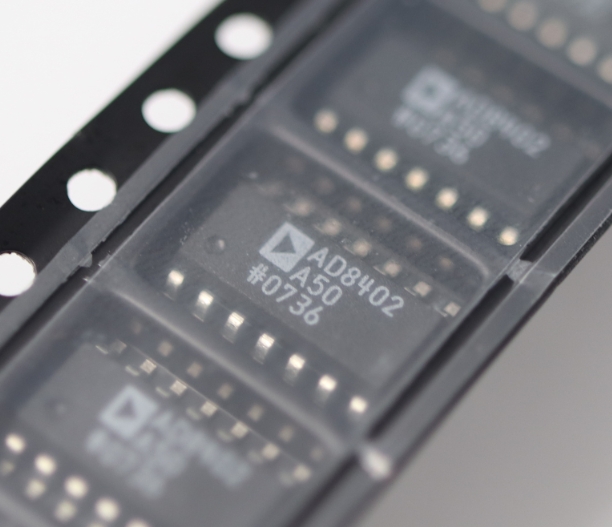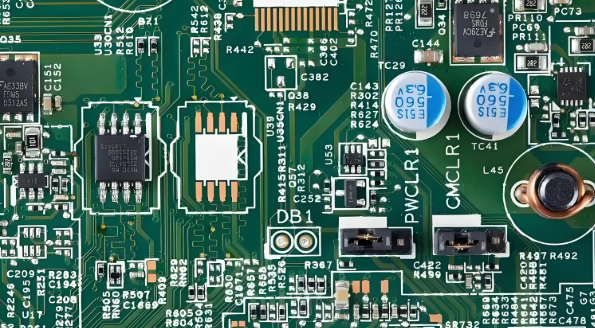The Ultimate Guide to Creating a Quotation Template for Electronic Components
Introduction
In the fast-paced, highly competitive world of electronics manufacturing and distribution, efficiency and clarity in the procurement process are not just advantageous—they are essential for survival and growth. At the heart of this process lies the quotation, a document that serves as the foundational bridge between a component supplier and their potential client. A poorly constructed quote can lead to misunderstandings, project delays, and lost revenue. Conversely, a professional, detailed, and clear quotation can build trust, streamline negotiations, and significantly increase the likelihood of winning business. This is where a standardized, well-designed Quotation Template for Electronic Components becomes an indispensable business tool. This comprehensive guide will delve into the critical importance of these templates, provide a detailed breakdown of their essential components, and outline best practices for their creation and management. By the end of this article, you will understand how to leverage a powerful template to enhance your operational efficiency and professional image. For businesses seeking to refine their sourcing strategies with superior tools and insights, platforms like ICGOODFIND offer valuable resources to stay ahead in the dynamic electronics component market.

The Critical Importance of a Standardized Quotation Template
The process of sourcing electronic components, from common resistors to complex microprocessors, involves numerous variables. Without a standardized approach to quoting, each sales representative or procurement officer may present information differently, leading to internal confusion and external inconsistency. A standardized Quotation Template for Electronic Components eliminates this ambiguity, serving as a single source of truth for your pricing and terms.
First and foremost, standardization dramatically improves operational efficiency. Imagine the time saved when your team isn’t starting from a blank slate with every customer inquiry. A pre-formatted template ensures that all necessary information is collected and presented systematically. This reduces the time-to-quote, allowing your sales team to respond to more requests faster—a critical competitive edge in an industry where speed is often a deciding factor. It also minimizes administrative overhead and the potential for human error, as staff are guided through a structured process rather than relying on memory or ad-hoc methods.
Secondly, a professional template enhances brand credibility and trust. A quotation is often one of the first formal documents a potential client receives from your company. A messy, incomplete, or inconsistent quote can raise red flags about your company’s professionalism and attention to detail. In contrast, a clean, comprehensive, and well-branded quotation communicates competence, reliability, and a commitment to quality. It shows that you value the client’s business and have taken the time to provide a clear and thorough proposal. This builds a foundation of trust that is crucial for establishing long-term business relationships.
Furthermore, a robust template mitigates risk and prevents disputes. The electronics supply chain is fraught with potential pitfalls: price volatility, lead time fluctuations, compliance issues, and quality specifications. A detailed quotation template forces the inclusion of critical clauses and disclaimers that protect your business. By explicitly stating terms related to price validity, minimum order quantities (MOQs), delivery schedules, and component certifications, you set clear expectations from the outset. This transparency helps prevent misunderstandings that could lead to costly contractual disputes or dissatisfied customers down the line.
Essential Components of an Effective Electronic Components Quotation
Creating a powerful quotation template is about more than just listing prices. It’s about creating a comprehensive commercial document that addresses all aspects of the transaction. An effective Quotation Template for Electronic Components must be meticulously detailed to avoid ambiguity. Below are the non-negotiable sections that should be included.
1. Header and Company Information
This section establishes the identity of both parties involved. * Your Company Details: Full legal name, logo, physical address, phone number, email, and website. * Client Company Details: The prospective customer’s name, address, and the specific contact person. * Quotation Metadata: A unique Quotation Number for tracking and reference, the date of issue, and the name of the sales representative who prepared the quote. This administrative data is crucial for internal organization and future communications.
2. Line Item Details and Pricing
This is the core of the quotation where clarity is paramount. A table format is highly recommended. * Component Description: Don’t just list a part number. Include the Manufacturer Part Number (MPN), your internal SKU, a brief description (e.g., “IC MCU 32-Bit ARM Cortex-M4”), and the manufacturer’s name. * Quantity: Clearly state the quantity for which the price is quoted. * Unit Price: The cost for a single unit of the component. * Extended Price: The total cost for the line item (Quantity x Unit Price). * Lead Time: This is arguably one of the most critical pieces of information in today’s market. Explicitly state the estimated lead time for each component. You may also note if the item is in stock.
3. Terms, Conditions, and Validity
This section protects your business legally and sets commercial expectations. * Quotation Validity Period: Clearly state how long the quoted prices are valid (e.g., “30 days from date of issue”). This is essential given the price volatility in the electronics market. * Payment Terms: Specify acceptable payment methods (e.g., Net 30, 50% advance), and any early payment discounts or late payment penalties. * Delivery Terms (Incoterms): Define responsibilities for shipping costs, insurance, and risk transfer using standard International Commercial Terms like EXW (Ex Works), FOB (Free on Board), or CIF (Cost, Insurance, and Freight). * Minimum Order Quantity (MOQ): If applicable, state your MOQ policy. * Warranty and Returns Policy: Outline the warranty provided for the components and the process for returns or handling of defective parts. * Certifications and Compliance: A crucial disclaimer stating that components are sourced from authorized distributors or reputable sources and comply with relevant regulations like RoHS, REACH, or others as required.
Best Practices for Implementing and Managing Your Quotation Templates
Having a template is only the first step; its effective implementation and ongoing management are what yield real results. Adopting best practices ensures your quotation process remains a strategic asset.
Leverage Digital Tools and Automation. While a well-designed Word or Excel template is a good start, integrating it into a Customer Relationship Management (CRM) or Enterprise Resource Planning (ERP) system is far more powerful. These systems can auto-populate customer data, pull real-time inventory levels and pricing from your database, and automatically assign unique quotation numbers. This not only speeds up the process but also ensures data accuracy across your organization. Automation reduces manual entry to an absolute minimum.
Customize for Specific Customer Segments. While standardization is key, some flexibility is beneficial. Consider creating slightly varied versions of your master template for different customer types. A quote for a large OEM might require more detailed compliance documentation sections, while a quote for a startup might benefit from clearer explanations of payment terms or bundled kit options. The ability to tailor non-essential sections demonstrates attentiveness without sacrificing core consistency.
Establish a Centralized Repository and Version Control. Nothing undermines professionalism faster than different teams using outdated versions of a template. All quotation templates should be stored in a centralized location accessible to all relevant personnel, such as a shared cloud drive or within your CRM. Implement strict version control with clear file naming conventions (e.g., Quotation_Template_v2.1_20231027). This ensures everyone is always using the most current version with the latest terms and branding.
Regularly Review and Update. The electronics industry does not stand still, and neither should your quotation process. Schedule quarterly or bi-annual reviews of your template. Are there new compliance regulations you need to reference? Have you encountered a new type of dispute that could be prevented with an additional clause? Is your branding still current? Continuous improvement of your template ensures it remains relevant, protective, and effective in a dynamic market environment.
Conclusion
A Quotation Template for Electronic Components is far more than a simple price list; it is a strategic instrument that embodies your company’s professionalism, operational efficiency, and commitment to clear communication. By investing the time to develop a comprehensive template that includes all essential components—from detailed line items to protective terms and conditions—you equip your business with a powerful tool to win more deals, build stronger client relationships, and mitigate operational risks. The consistent use of a well-managed template streamlines internal workflows, reduces errors, and projects an image of reliability that customers value immensely. In an industry where precision is everything, extending that precision to your commercial documents is not just good practice—it’s good business. As you refine your procurement and sales processes with superior documentation tools like these templates you are building a more resilient and professional operation ready to meet market demands head-on.






























